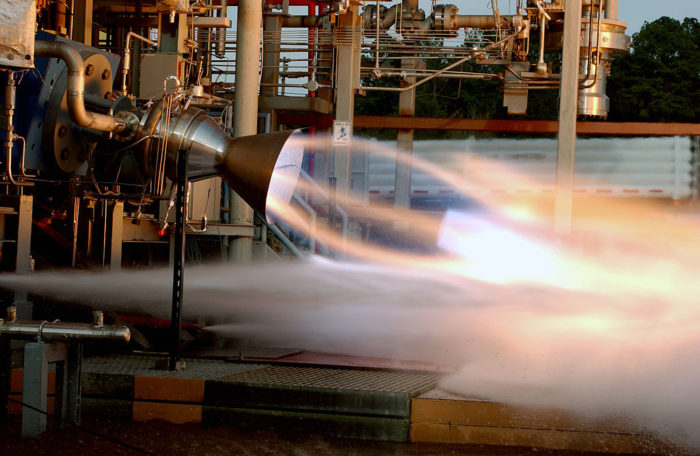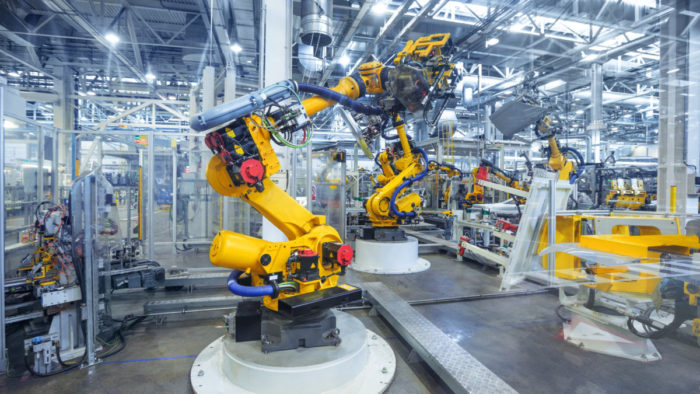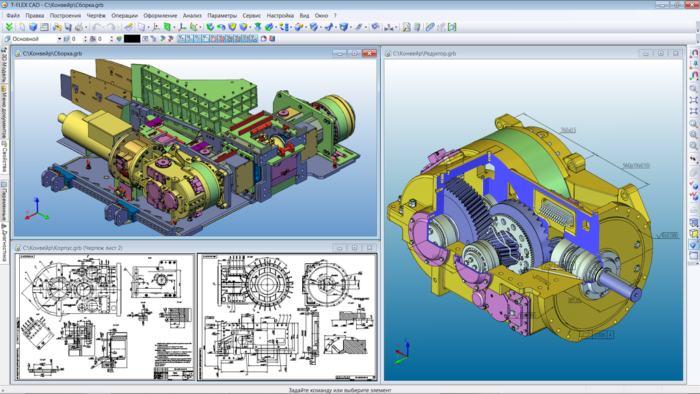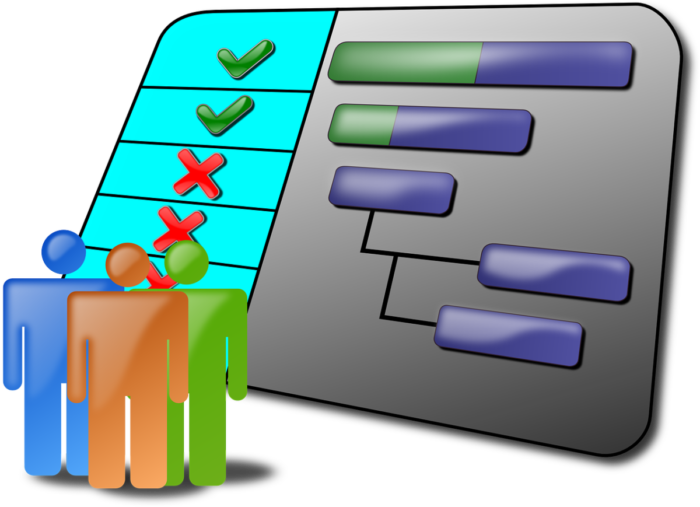I’m a hands on engineer and I was skeptical of sitting behind a desk all day looking at a computer. However, I also knew that I wanted to design and build things for a living.
Most mechanical engineering roles are hands off. Some career paths like testing and manufacturing engineering will provide more hands on rolls than design or applications engineering. The size of the company and typical project duration will affect how much hands on time you will have.
At the end of the day, how much hands on time will really come down to what you want to do in your career and how much hands on time you desire. If you want to be hands on, you will find ways to make your job more hands on.

In general though, you will probably still spend at least 50% of your time at a computer or in meetings.
Let’s examine what we can look for in an engineering career that will increase or decrease the amount of hands on work we will do.
Choosing an Engineering Role
Choosing the right role will make a lot of difference in how much hands on time you can get. I have grouped following roles into high medium and low hands on time. These can and might change depending on your company size and industry.
High Hands On Time
Testing, manufacturing and maintenance engineering will offer your highest hands on time.
New products need to be tested and that required the design and fabrication of a test and a device to test the product. Here is where you can find a lot of “redneck” engineering in a professional setting, because test equipment is often only used once. Since these products and test methods aren’t proven, you will have a considerable amount of downtime which the test engineer will need to spend time troubleshooting and repair.

Manufacturing engineering supports production and will spend a lot of time improving the production process through means of solving bottlenecks, increasing capacity, solving chronic issues and creating fixtures or other tools. This can be one of the most fun ways of increasing your engineering knowledge and skill quickly.
One cool thing is that many manufacturing engineers are programming robots to do production work. This is a great way to expand your skill and knowledge and be nearly 100% hands on.

Maintenance engineering aims to keep the machines and the shop moving smoothly. Most of the maintenance work will be handled by technicians and the engineer would only be involved when a situation needed high level troubleshooting or deviation from a standard process.
If you are good that this position, you wouldn’t need to be hands on because preventative maintenance on the machines would keep them running. However, that is never the case.
Medium Hands On Time
Product support and product design engineering are the middle of the road. You will spend some time hands on, but 60% – 90% of your time behind a computer.
Product Design was the field I chose and I tried to be on the low side of the spectrum. The amount of hands on time usually comes in spurts as well. You may spend a week designing a product and then a few days putting together a prototype and some testing. Then it is back to the computer to make some corrections.
The cycle will vary depending on what you are designing. At a former employer, our planning and design phase may take 8 to 12 months. Once the prototype was ready to be built, I was out there helping for 80% – 90% of my day for several weeks. Once building was done, we would do functional testing and then send it to a satellite campus for more testing.

Likewise, product support usually comes in spurts. Here you would learn of a problem and then gather information. Hands on work here usually consists of visiting one or more customer locations or doing audits of inventory on hand. You may also need to travel to suppliers and audit their process if a particular component is part of the problem or a potential solution.
Low Hands On Time
Quality and applications engineering is probably the lowest hands on time, but this greatly depends on your industry. Quality engineers generally manage how the process of the QA department is going and manage specific issues at a higher level. There are times when they need to inspect a product for a deficiency, but many times this is handled by a QA technicians usually do the day-to-day hands on stuff.
Applications engineers could also be put the Medium category. Many times, the engineer will interview the customer or get a spec sheet and then select the right solution for a product. Most of this is done at your desk. There are cases, like repeated failures of a product, where you may need to visit the customer and see the application.
Company Size
You probably didn’t think that company size was a factor in the amount of hands on work, but they are closely linked.
In a small business (under 50 employees) things are very flexible. You may find that after designing a product, you are designing the fixtures to produce it, inspecting parts, assembling the prototypes, and then testing the product. Once the product is in the field, you me be handling product support issues. At one company I worked for, I was also the IT guy. That got me up and moving around as well.
Many of these roles are hands on and get you off your butt and learning about all facets of engineering and production. I worked for two companies this size and thrived in this environment.
Large companies over about 250 employees start to departmentalize for the sake of efficiency and the scope of your work may be limited. Generally speaking, you will see these departments pop up:
- Research and Development
- Product Design
- Quality
- Manufacturing / Production
- Testing
- Product Support
- Applications
In this case, you may be forced to choose between a roll that is all hands off or one that is very hands on.
I worked for a large company in the product design group and most of my job relied upon computer work. However, I was still able to get some hands on time. I made it a point to cycle through the shop and see how the production was going. Every once in a while I would help a worker do his/her job and hammer in a pin.

I also became the “go to guy” for solving unique issues with the product. Often this would consist of diagnosing unusual mechanical, hydraulic or electrical issues. This was usually a welcomed break from the daily grind.
On one occasion, I was able to do some product testing where a hard to get to hydraulic cylinders needed to be replumbed after some testing. I ended up under the machine with the cylinder directly above my chest and lots of oil oozing all over me. It was AWESOME!
When I was finished, I was covered in sweat and oil (mostly oil) and went to my boss to ask to take the rest of the day off to clean up (it was already mid afternoon). He mentioned to me that you could have had someone else do that for you. My response was, “Why would you want to take this away from me?”
Development Timeline
There are so many industries that use mechanical engineers that it is impossible to classify them all. I would encourage you to instead look at how long it takes to develop a product. This can tell you a lot about how much hands on time you will expect to see.

In my former roll, we worked on project that took roughly 2.5 to 3.5 years to complete. The first 6-12 months was design, followed by a year of prototyping, testing and customer evaluations. We would then monitor its progress in the field for a year before closing out the project. The hands on time would come in spurts for the prototype and testing for one to two months in this timeline.
While this doesn’t seem like much hands on time, there may be three of these projects going on simultaneously.
In a job before that, there was a much shorter project duration and the company focused more on the design and prototyping. Most testing was done by the client and we didn’t monitor how it worked in the field. Projects lasted between 1 and 8 months and as a result, I spent a lot more time working in the shop hands on.
Summary
In any field, you can be hands on or not. I have found that many engineers who are hands on develop their technical skills much faster than those who sit behind a desk all day. Being hands on also allows you see first hand what good and bad design are and how something overlooked in the design can cause problems for production and support.
Remember that you can often switch jobs in a company. You may need to take any job at a company you want to work for and then focus on transferring to another department as roles open up.

